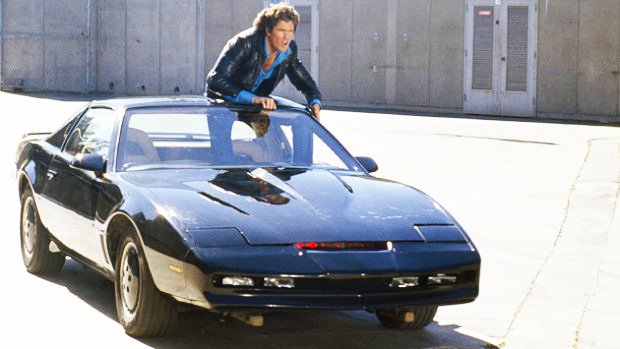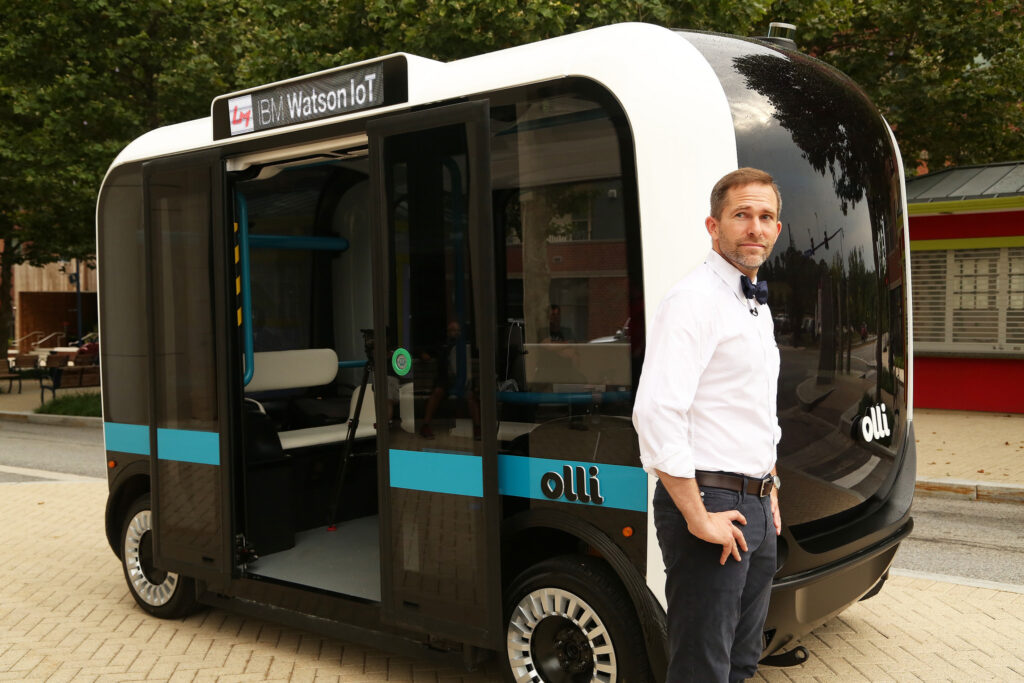How the world’s smartest computer will use small talk to make driverless vehicles more “human”
Imagine a talking car and you’ll probably think of the 1980s hit TV show Knight Rider – and David Hasselhoff being upstaged by a chatty black Pontiac Firebird Trans Am with a flickering red light under the hood.
The car, KITT, was said to be powered by artificial intelligence. It could assess risks and options, think and act for itself without the need to be pre-programmed.

Well, more than 30 years after the show first aired, the world’s most famous supercomputer is now being added to a driverless vehicle to help put passengers at their ease … by chatting to them.
Back in February 2011, IBM Watson made headlines around the world by beating two all-time human champions on the American quiz show jeopardy.
Watson won the $1m jackpot by beating the human brain’s ability to find answers in fragments of information.
The machine was able to answer riddles and demonstrate an almost-human understanding of language.
It understood that sometimes words can have different meanings depending on their context, such as in the case of jokes, puns and metaphors.
This summer Watson has been combined with Olli, a brick-shaped minibus for 12 people built by Arizona car company, Local Motors.
Olli’s brick-shape makes it a far cry from KITT’s sleek sports lines, but IBM and Local Motors are putting the minibus through road trials in Washington, Miami and Las Vegas.

Interestingly, Watson isn’t there to drive the car. Instead, the supercomputer will be there to talk to the passengers. According to IBM:
Passengers will be able to interact conversationally with Olli while travelling from point A to point B, discussing topics about how the vehicle works, where they are going, and why Olli is making specific driving decisions. Watson empowers Olli to understand and respond to passengers’ questions as they enter the vehicle, including about destinations (“Olli, can you take me downtown?”) or specific vehicle functions (“how does this feature work?”) or even “are we there yet?”. Passengers can also ask for recommendations on local destinations such as popular restaurants or historical sites based on analysis of personal preferences. These interactions with Olli are designed to create more pleasant, comfortable, intuitive and interactive experiences for passengers as they journey in autonomous vehicles.
Over the last decade, we’ve started to get used to voice tech: from the familiar bark of directions from a sat nav during a journey, to the sound of Siri, Apple’s virtual assistant for iPhone.
Indeed, voice tech is predicted to be a growing feature of the way we engage with technology. One forecast predicts that 30% of our interactions with smart machines will be through conversation … by 2018!
But why would IBM think it’s important to have a conversation with a driverless car? And not just instructions and directions, but open-ended questions about where you’re going and what’s happening?
The answer may well be trust.
One of the barriers to the adoption of driverless cars is that humans are understandably cautious about putting their lives under the control of a machine travelling at speeds of up to 70mph on crowded road networks.
As the LA Times reported in June, only a slim majority of Generation Y and Z – people born from 1977 through to the year 2000 – say they would be happy as passengers in a fully autonomous vehicle.
Ask today’s 40- and 50-somethings – Generation X – and you’ll see confidence in driverless cars drop to about 40%.
Ask their parents – the post-War Baby Boomer generation – and trust in autonomous vehicles drops to about 20%.
Basically, the very idea of taking your hands off the wheel, feet off the pedals and eyes off the road goes against the rules of the road that drivers are taught from their very first driving lesson. It’s counter-intuitive.
And if you don’t know what the car is “thinking”, why it’s doing what it’s doing, and you don’t recognise where you’re going, the effect may be all the more unsettling.
Which brings us back to Watson: a friendly-voice that can understand your questions, potentially even your sarcasm, and fire back a clear and nerve-settling answer.
So when IBM talks about Watson “personalising the driving experience”, it means adding a voice of reassurance.
But when your vehicle starts talking to you – giving you advice and tips – how will your relationship with the car change?
Will it be harder to part with in future? Will part-exchange feel like selling out an old friend?
Will choosing a type of voice be tomorrow’s equivalent of choosing a colour or optional extras?
What does Watson make of it all …?
